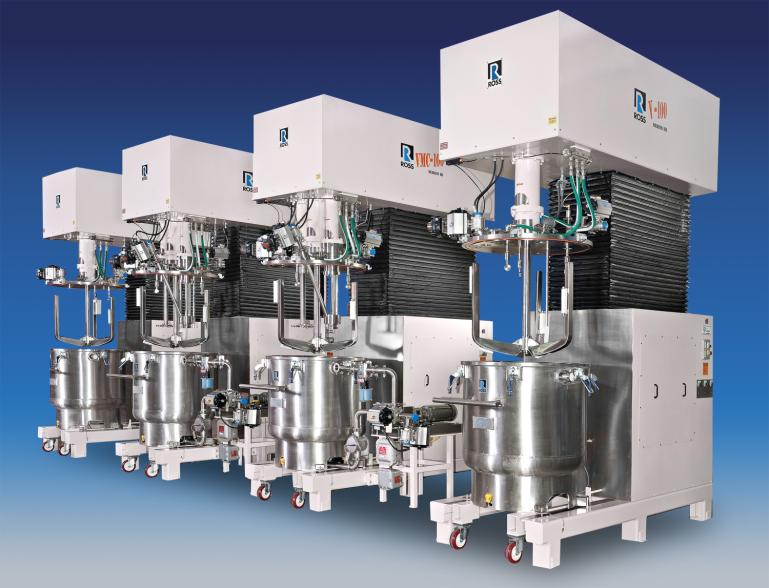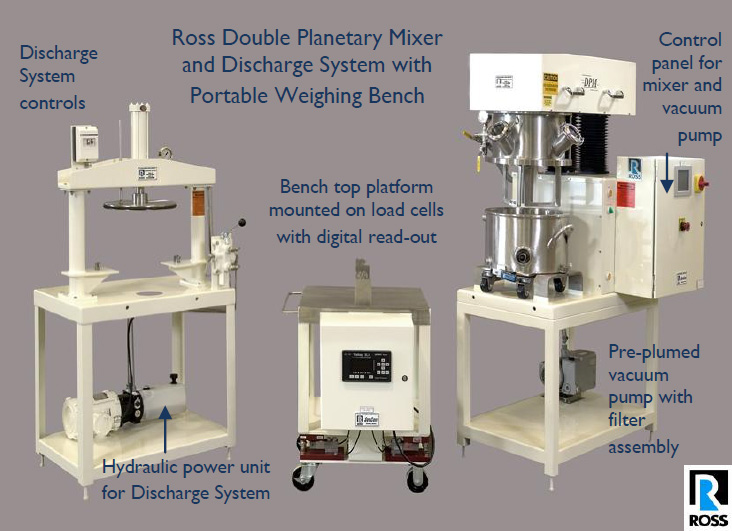Tech Report
Expand your mixer`s capabilities with the right auxiliary equipment.

Technology Brief
This bulletin touches on popular auxiliary mixer features and their benefits.
Think beyond mixing
Manufacturers are coming to rely on their mixers to achieve a broad range of mixing objectives: from powder wet-out to grinding and particle size reduction, homogenization, emulsification, mass transfer, solubilization, chemical reaction, etc. At the same time, fierce competition is pushing companies to re-evaluate existing processes and equipment to improve quality and profit.
In order to deliver on these requirements, mixer selection and specification must take into account not only its usefulness as a mixer but also other capabilities including complete deaeration, tight temperature control, convenient material handling, fast discharge or even easier quality testing. A well-equipped mixing system is crucial for streamlined and cost-effective processing especially when dealing with expensive raw materials, sensitive ingredients or very demanding formulations.
Some auxiliary equipment and features to consider
- Heating/cooling unit. Heat transfer often accompanies the mixing operation. Temperature control is important because it can dictate viscosity, reaction rates, solubility and other parameters that directly affect mixing performance. For critical processes, integrate temperature regulation into the main mixer controls for the heater or chiller to react to real-time batch temperature.
- Vacuum pump. Mixing under vacuum accomplishes a number of benefits depending on the application. For some, it is a matter of aesthetics, like in the case of coatings, personal care products or molded plastics. Void-free mixtures contribute to the strength and precision of high performance composites. In food products, vacuum is applied to improve shelf life by removing oxygen thus thwarting unwanted chemical reactions and microbial growth. Applying vacuum also improves material handling and performance. Certain gels and pastes are mixed under vacuum to prevent defects in syringe filling or printing. Finally, vacuum mixing is an excellent method for fast drying of heat-sensitive materials without fear of thermal degradation. Most mixer designs can accommodate a built-in vacuum pump for convenient operation and control.
- Recirculation line. When processing low- to medium-viscosity dispersions in a stirred tank or reactor, the addition of a recirculation loop with an inline rotor/stator mixer normally helps to accelerate the mixing cycle. The supplemental shear and agitation provided by the inline mixer can create a narrower particle size distribution while boosting throughput. An inline mixer designed for powder injection is recommended for processes involving large amounts of solids or powders that are difficult to wet out. If additional mixing outside the tank is not needed, a recirculation loop equipped with a regular pump may include transmitters for measuring viscosity and density to instantaneously verify that the batch is complete and within spec.
- Automated discharge. In the production of non-flowing viscous mixtures, the use of a platen-style discharge system can significantly improve production speed and efficiency while simplifying clean-up. After the mixing cycle, the vessel is moved under the discharge system and a precision platen is lowered hydraulically into the batch. A specially-fitted O-ring rides against the vessel sidewalls, virtually wiping the surfaces clean. Product is forced out through a valve on the side or bottom of the vessel, or through the top of the platen.
